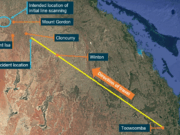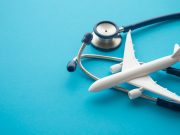
The U.S. Federal Aviation Administration (FAA) should update its substance misuse programs for pilots and flight attendants and improve associated data collection and transparency, according to a panel of specialists in treating people who misuse alcohol and drugs.1
In a report issued in late June by the National Academies of Sciences, Engineering and Medicine, the panel said substance use disorders in the United States as a whole are “profound” and estimated that they occur among pilots and flight attendants at about the same rate as in the general population — around 15 percent. However, the report noted, pilots are held to a higher standard because of the high-risk nature of their jobs.
“Ensuring that pilots and flight attendants who misuse substances are excused from duties and receive effective treatment is essential for their personal health and for general public safety,” the report said.
The report examined the Human Intervention Motivational Study (HIMS) program, established in 1974 with a grant from the National Institute on Alcohol Abuse and Alcoholism to the Air Line Pilots Association, International, and the Flight Attendant Drug and Alcohol Program (FADAP), established in 2010.
Although HIMS was established to study the viability of an alcohol treatment program for pilots, it has evolved into a monitoring program that coordinates a pilot’s treatment and return to work under FAA special issuance regulations. A special issuance represents the FAA’s approval of a pilot with a disqualifying medical condition.
FADAP is designed to provide flight attendants with peer support and a “flight-attendant-specific recovery support system,” the report said.
Limited data available from both programs indicated that alcohol was the substance most frequently misused by program participants. More than 90 percent of pilots in the HIMS program and more than 80 percent of flight attendants in FADAP had an alcohol use disorder, according to the report, which was required under a 2018 law.
About 4 percent of pilots in HIMS and 16 percent of flight attendants in FADAP misused stimulants (methamphetamines and cocaine), and fewer than 2 percent in both groups misused opioids, the report said, adding that the limited data from accidents and incidents “provide reason for concern about the potential impacts of prescription medication or illicit opioid misuse particularly when combined with an opioid epidemic that continues in the general population of the United States.”
The panel said it had difficulty obtaining data from HIMS and the FAA to evaluate the program, adding that HIMS administrators denied requests to share de-identified data about the program. The panel’s “call for perspectives” from pilots netted nine responses, compared with more than 1,000 responses to a similar call for perspectives from flight attendants.
“Collecting and maintaining reliable data will be the first step in allowing the FAA to improve these substance misuse programs,” said Richard G. Frank, chair of the panel that wrote the report.
One of the report’s recommendations called on the FAA to require both HIMS and FADAP to collect and maintain reliable data. The document noted the reputation of HIMS as “the gold standard among programs to address substance abuse disorders within the global transportation industry,” but said that data to support that conclusion is lacking.
“[E]vidence about the effectiveness of HIMS and FADAP is largely absent, and … the available information did not consistently support the conclusion that these programs should necessarily serve as models for other segments of the transportation industry,” the report said.
The report noted that many participants in each program receive the same level of treatment, regardless of the severity of their illness. In a statement accompanying the report, the panel said the FAA should revise federal regulations to “align, as much as possible given the limitations of the aviation setting, with the most current evidence-based methods for diagnosing substance use disorders, which consider illness severity and lead to more personalized immediate and ongoing treatment.”
The FAA also should require “rigorous screening for substance misuse in mandated annual physical exams for all professions that require a high level of safety proficiency and responsiveness,” the panel said.
Another recommendation called on the FAA to encourage the airlines to allow pilots and flight attendants to self-report substance misuse without facing the possible loss of their jobs. The report suggested developing methods of disclosing a problem outside of a job performance review.
Airlines also should provide insurance benefits for mental health and substance misuse services, the report said.
Image: Kotivalo, CC BY-SA 3.0, via Wikimedia Commons
Note
- National Academies of Sciences, Engineering and Medicine. “Substance Misuse Programs in Commercial Aviation: Safety First.” Washington: The National Academies Press. 2023.


